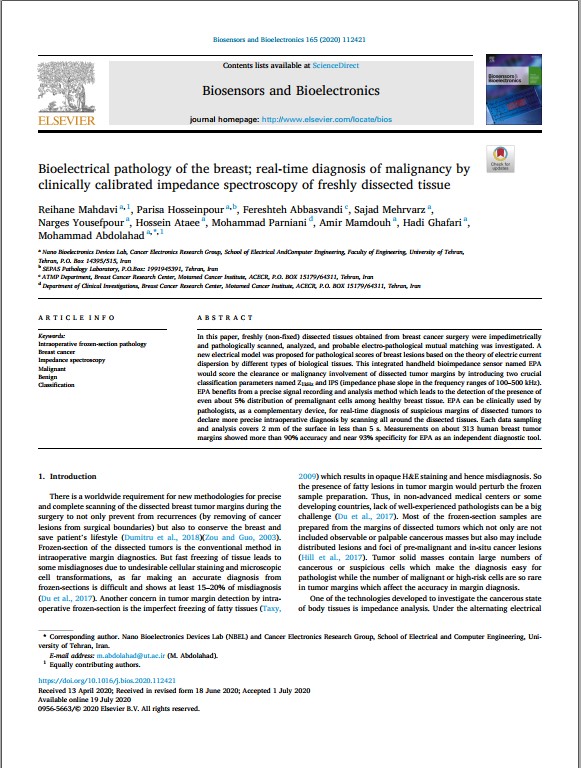Bioelectrical pathology of the breast; real-time diagnosis of malignancy by clinically calibrated impedance spectroscopy of freshly dissected tissue
Abstract
In this paper, freshly (non-fixed) dissected tissues obtained from breast cancer surgery were impedimetrically and pathologically scanned, analyzed, and probable electro-pathological mutual matching was investigated. A new electrical model was proposed for pathological scores of breast lesions based on the theory of electric current dispersion by different types of biological tissues. This integrated handheld bioimpedance sensor named EPA would score the clearance or malignancy involvement of dissected tumor margins by introducing two crucial classification parameters named Z1kHz and IPS (impedance phase slope in the frequency ranges of 100–500 kHz). EPA benefits from a precise signal recording and analysis method which leads to the detection of the presence of even about 5% distribution of premalignant cells among healthy breast tissue. EPA can be clinically used by pathologists, as a complementary device, for real-time diagnosis of suspicious margins of dissected tumors to declare more precise intraoperative diagnosis by scanning all around the dissected tissues. Each data sampling and analysis covers 2 mm of the surface in less than 5 s. Measurements on about 313 human breast tumor margins showed more than 90% accuracy and near 93% specificity for EPA as an independent diagnostic tool.

